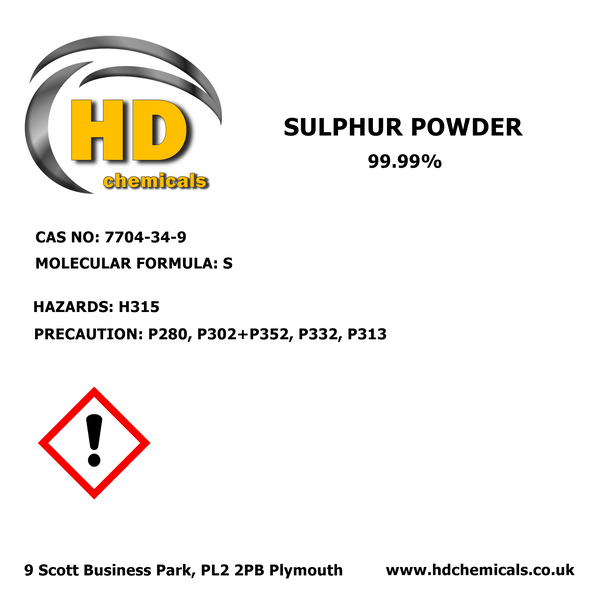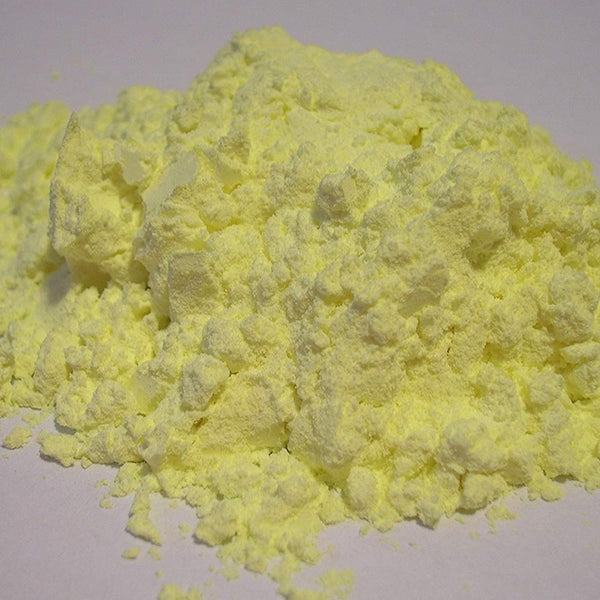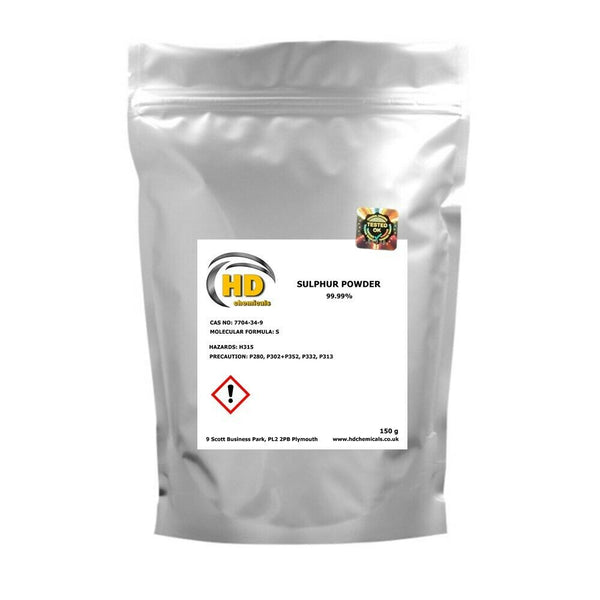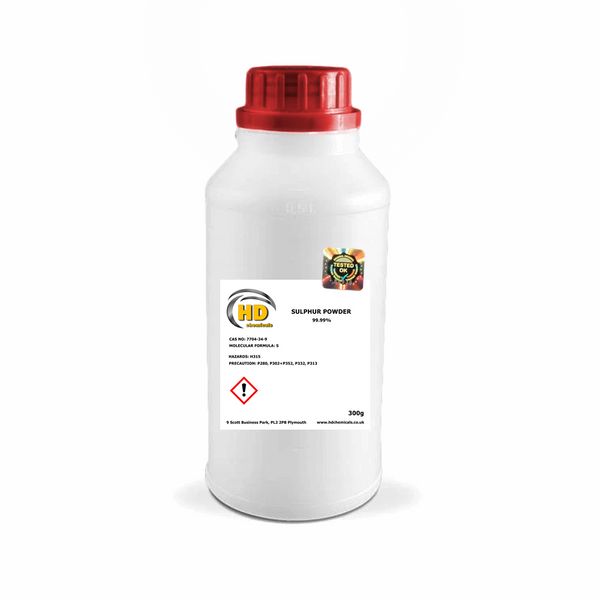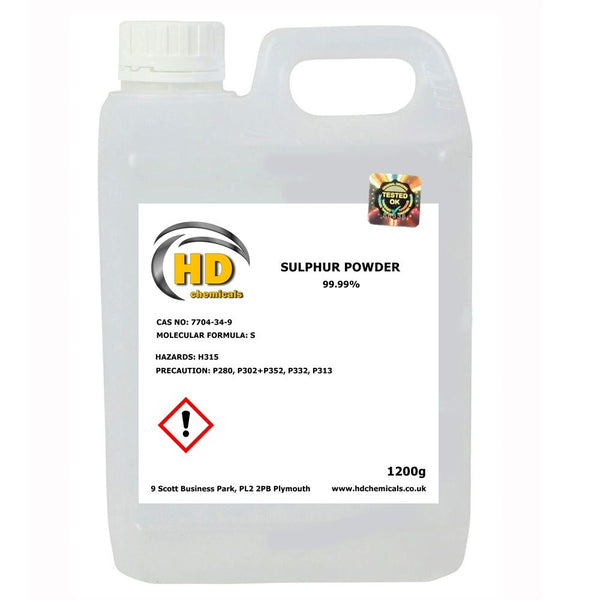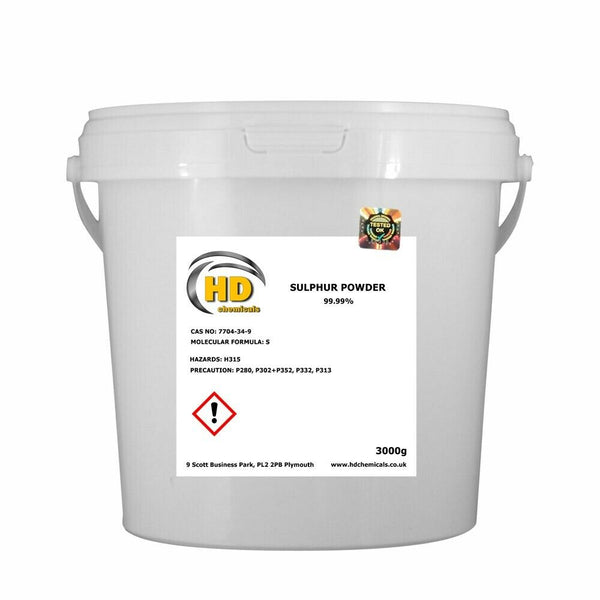Sulphur Powder 99.99%
SULPHUR POWDER 99.99% Pure
Molecular formula: S
Sulphur powder is a slightly yellow, crystalline and organic product made from distilled sulphur flowers. The distillation process leaves the product pure through a high sulphur retention rate. The finished product is quite handy around the home and in plantations.
This product keeps mildew, rot and fungi away from your plants, pets and farm animals. Historically, it features in treatments for arthritis, horses with mud fever, dogs, and as a farm fungicide for many years.
What Is Sulphur Powder Used For?
Thanks to its organic nature, the sulphur powder is used for several purposes, including:
- Gardening: Gardeners often sprinkle this product on flowers and vegetables to prevent black spots, mildew and rot spreads. It is also applied to surrounding plant soil for pH regulation. It is essential to organic food production as a naturally occurring mineral.
- Treating Mud Fever: Horse owners will be familiar with sweet itch and mite infestations that threaten horse health. Applying this product with a pig oil mixture to your horse’s shoes will help combat the itchy feels caused by mud fever.
- Dog Breeding: You may apply this product to your dog’s skin to prevent flea infestations and treat rashes. When treating either of these conditions, ensure all affected areas (usually visible due to discolouration) are appropriately covered.
- It is also used in traditional arthritis treatments and natural mineral makeups.
Is Sulphur Powder Edible?
No, the sulfur powder is not edible and should not be ingested or inhaled. If ingested, please seek immediate medical attention. You should keep this product away from water, food, pets and children at all times to avoid health hazards. Contact with the skin or eyes can cause irritation.
How Do I Apply Sulphur Powder To My Garden?
Before applying this product to your garden, you should identify the goal you are trying to achieve. If your plants are stunted, it means the soil pH is too high or a nutrient deficiency. In either case, you should test your soil sample.
After testing, you may sprinkle a handful per square meter and rake this over to ensure it mixes well within the soil. This process should be done at least a month before the new planting season.







